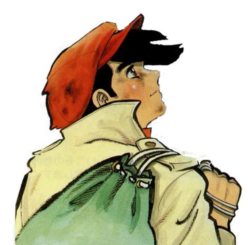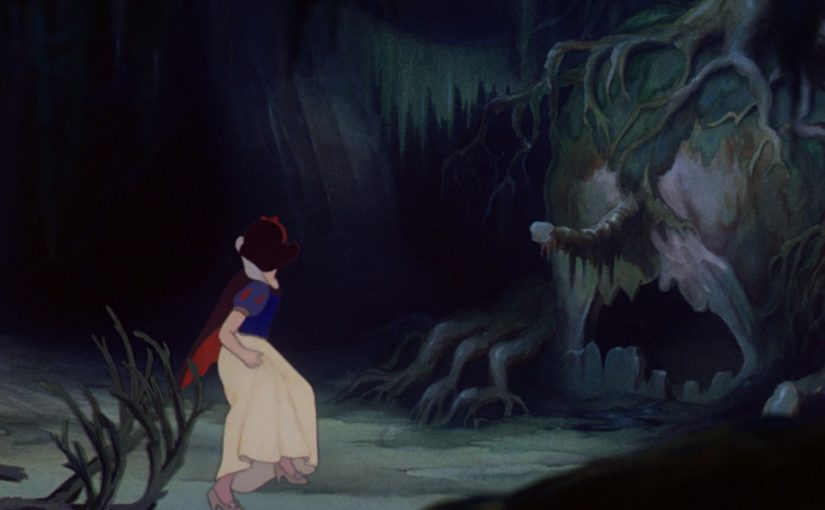A fan’s subjective perspective on the early stages and evolution of traditional animation. Mostly an extensive list of cartoons and films that stand out in my eyes, all in neat chronological/geographical order. You’re welcome. Today: a special post about Snow White, Disney’s first animated film.
Golden Age of Animation – Disney’s Feature-length Films
Snow White and the Seven Dwarfs, 1937
Snow White was the first completely hand-drawn film and the first feature-length animation to become this successful and well-known. Many predicted it would bankrupt the company. Some critics actually said people were gonna walk out because the colors would hurt their eyes. But it was praised by critics and audiences and made loads of money, which was then sadly lost on later projects. Due to the success of Snow White¸ Disney put their focus more and more on similar projects, creating all the classic animated movies everyone knows and loves.

“The first duty of the cartoon is not to picture or duplicate real action or things as they actually happen — but to give a caricature of life and action — to picture on the screen things that have run thru the imagination of the audience to bring to life dream-fantasies and imaginative fancies that we have all thought of during our lives or have had pictured to us in various forms during our lives […] I definitely feel that we cannot do the fantastic things, based on the real, unless we first know the real. This point should be brought out very clearly to all new men, and even the older men.”
Walt Disney in 1935, thanks W. Pedia
To ensure the animation was as realistic as possible, Walt Disney actually sent his animators to art school and brought in animals and actors so the animators could study realistic movement. I am glad to read that some of the animators disapproved of rotoscoping, considering it to hinder the production of effective caricature. As you may remember from the last posts, I’m not a fan of the process. Some of the scenes of the human characters were rotoscoped though. A 40-minute “making of” of Snow White can be seen here.
My favorite parts:
– 8:40 Walt Disney acting out the characters
– 18:00 sound effects
– 27:50 use of the multi-plane camera
Some distinct feats of the film:
– After years of only cartoons, with a usual runtime of about 7 minutes, an animation studio made an entire film. Looking at it simply, it’s basically like making a series of several connected scenes/shorts, so it shouldn’t be that big of a deal, right? Yes it is, stupid.
– It does not just consist of slapstick and physical comedy, but real drama, with nuanced characters and realistic, expressive movements. A cartoon about life and death where audiences could be crying instead of just laughing.
– There’s considerable attention to detail in the surroundings, buildings, trees, carvings,…

– Use of the multi-plane camera (special mention for the scary trees opening up)
– Influence by and referencing of mainstream films (Romeo and Juliet, 1936) and obscure, European silent cinema (The Cabinet of Dr. Caligari, 1919 & Nosferatu, 1922)
– Distinct personalities for each character. The seven dwarves come to mind, all named according to their respective natures.
– Memorable soundtrack. I’m a sucker for the music: “Someday my prince will come” is my all-time favorite Disney-song. (I would add “no homo”, but you know, it’s 2018. I’m a straight man enjoying a song about wanting a f*cking prince and I’m proud of it.) Most Disney films will follow this musical format for years to come. I must admit, I get really annoyed when cartoon characters break into song and dance. In our day, it seems a bit dated and contrived. But I love it here.

Just kidding, it’s the special effects sound guy.
Here’s the part where would show you the video, but I obviously can’t link you to the full movie. So here are some clips… of nearly the whole movie:
One of my favorite clips, I love the detail on the different birds’ movements. Nice song. The “Eek! A man!” moment is hilarious. Cool camera move over the castle.
Watching this scene after seeing so many Silly Symphony cartoons, it seems so similar. Somehow Snow White reminds me of Betty Boop in her housewife-years, even though they couldn’t be more different.

Actually even more like a Silly Symphony. If you don’t think Dopey lagging behind is precious, you have no soul.
The dwarfs fall in love with Snow White, while she sings about another man. Afterwards, they all cry and eat ice cream and bingewatch How I Met Your Mother.
Funniest dwarfs scene.
The best scene by far. Scary trees, great use of the multiplane camera, some more abstract images when Snow White’s fear takes over. Something you don’t expect to see in a Disney movie.
Another experimental scene. More, please.

Death!
One song / Someday My Prince Will Come
Death! Oh wait, nevermind.
When you compare these clips to Mickey or Silly Symphonies cartoons, I can’t shake the feeling, they’re not all quite on the same level as the best shorts. The rotoscoping’s a bit of a disappointment too, especially because the Snow White actress is overacting and looks a bit silly by modern day standards. However, the movie shines when the animators delve into the character’s emotions and get experimental in the magical and darker moments. That’s where Snow White proves animation is capable of more than just physical gags and musical skits.
A few names to remember:
– Ted Sears, writer, (from Fleischer Studios’ experimental work in the early 30’s) was the first head of Disney’s story department and did significant work on many Disney features from Snow White to Sleeping Beauty.
– David Hand, director, animated some Silly Symphonies such as Midnight in a Toy Shop and Egyptian Melodies.
– Wilfred Jackson, director, directed The Old Mill and several sequences in many of the Disney films up to 1955.
– Frank Churchill, composer, wrote most of the music. Also worked on Dumbo and Bambi.
That’s a wrap I guess.
Previous posts:
Early stages of animation (1): 1900-1940
Early stage of animation (2): 1920-1937 – The Rise of Cartoons
Next up: Pinocchio!


I hope that the revived Snow White comes back to the forest one day and reunites with the seven dwarfs Doc, Grumpy, Happy, Bashful, Sneezy, Sleepy and Dopey and the forest animals (the deer, the birds, the rabbits, the raccoons, the chipmunks, the squirrels, the quails and the turtle) again when she returns from the Prince’s castle in the clouds above on the white horse now her stepmother the Evil Queen in her old hag disguise is dead and gone after getting hit by lightning and crushed by a boulder herself and so are the two vultures as well.